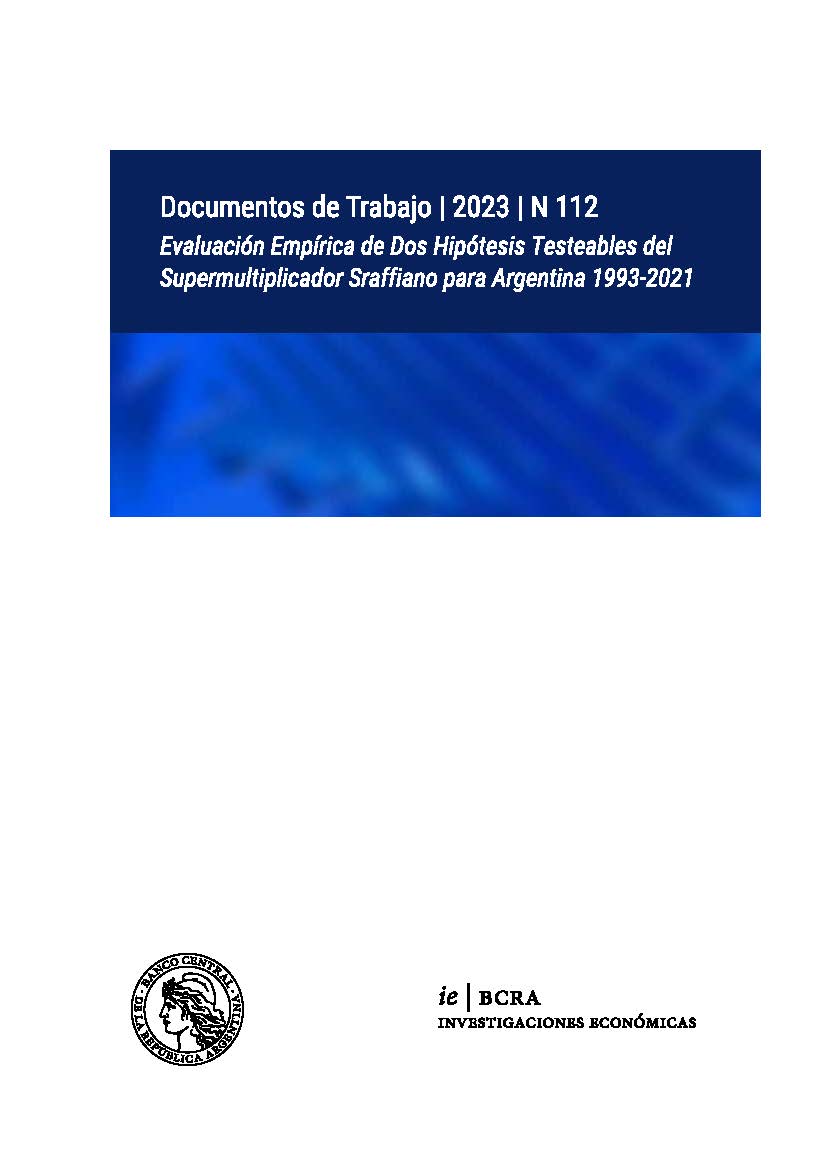Empirical Evaluation of Two Testable Hypotheses of the Sraffian Supermultiplier for Argentina 1993-2021
Working papers | 2023 | N 112
Keywords:
Economic Growth, Vector Error Correction Models, Effective Demand, Sraffian supermultiplier, Induced investment, Argentine economyAbstract
The Sraffian Supermultiplier Model (MSS) (Freitas and Serrano, 2015; Serrano, 1995; Serrano et al., 2019) has gained prominence in recent times, both in theoretical and empirical discussions within the framework of growth models led by the demand. The MSS has three distinctive characteristics: the growth rate of the economy is determined from the growth rate of those autonomous expenses that do not generate productive capacity; investment is a variable induced by the product; and the distribution is exogenous. This document aims to test the first two characteristics of the MSS through various empirical exercises for Argentina during the period 1993-2021. As a first exercise, we estimate an Error Correction Vector Model, using Johansen's method (Johansen, 1988, 1991) which provides evidence that the growth rate of output ultimately depends on the growth rate of autonomous expenditures. . This econometric method also allows us to show that the autonomous components of demand are weakly exogenous variables, while the product is the variable that adjusts to long-term deviations with these components. The second exercise evaluates the existence of a mechanism for adjusting production capacity to demand, based on the flexible accelerator principle. We use a VAR analysis to show that, consistent with the MSS, the investment ratio is Granger caused by the product.
JEL classification: C22; E11; E22; O41; O47; O54


